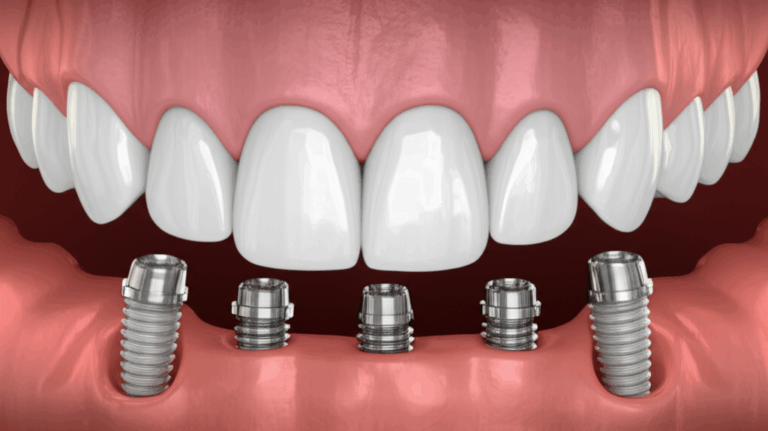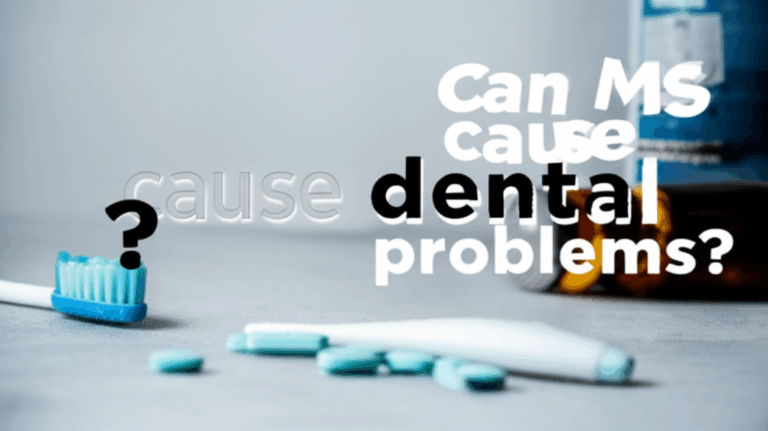
Does Affinity Health Plan Cover Dental Implants? My Firsthand Guide to Understanding Your Benefits
Table of Contents
- Affinity’s Place in the Insurance World
- Types of Affinity Plans (Medicaid, Child Health Plus, Essential Plan, Medicare Advantage, Individual and Family)
- Major Restorative vs. Cosmetic
- Medical Necessity
- Common Plan Barriers: Waiting Periods, Annual Maximums, Pre-authorization
- In-Network Maze and Component Coverage
- Reviewing My Plan Documents
- Calling Customer Service (What to Ask)
- Speaking With My Dentist & The Pre-treatment Estimate Game
- National and New York Averages
- What Insurance Might Kick In (With Examples)
- Annual Maximums, Coinsurance, and Deductibles
- Financing Options
- Bridges, Dentures & Lower-Cost Care
- Dental Schools and Discount Plans
Introduction: The Short Answer Upfront
Let me get right to it: “Does Affinity cover dental implants?” After going through insurance papers, making lots of phone calls, and talking with my dentist and other people, here’s the honest answer—it depends.
I know, that’s annoying to hear when all you want is a simple yes or no. I felt the same. The truth is, Affinity Health Plan (like most dental insurance) doesn’t have one rule for everyone. If your dental implants are covered, it depends on your plan, if they’re needed for medical reasons, and even which dentist you see.
Don’t worry—I’ll explain what I found, show you how to check your benefits, and give you the steps I took. There’s no magic answer, but there are clear ways to see what you can get and how to get the most help if you need implants.
Understanding Affinity Health Plan’s Dental Coverage Landscape
Affinity’s Place in the Insurance World
When I got into this, I was surprised to find out that Affinity Health Plan is part of Molina Healthcare, a big health insurance group in New York and other states. So, Affinity offers both public and private plans, and they each have different rules for things like dental implants.
Types of Affinity Plans
Here’s how the main plan types deal with dental implants:
So, there’s no one answer. Each setup is different, with different rules, wait times, and lists of what’s covered.
If you’re curious how other dental options are made, or what “restorative dentistry” covers, you can learn more from a specialized implant dental laboratory. It helps when you talk to your dentist or insurance.
Why Dental Implants Are a Coverage Grey Area
To be honest—dental implants are kind of a gray area. When I first asked my dentist about implants, he told me dealing with insurance could be harder than the surgery!
Here are the main reasons insurance companies, even big ones like Affinity, are tricky about implants:
Major Restorative vs. Cosmetic
Most dental insurance splits treatments into three groups:
- Preventive (cleanings, X-rays, checkups)
- Basic (fillings, some tooth pulling)
- Major (crowns, root canals, surgeries, and—yes—implants)
Insurance usually wants to pay for cheap, simple stuff. For big work like implants, they don’t want to pay because it’s pricey.
Insurance also calls implants “cosmetic”—meaning they just make you look better. Unless you lost your teeth from an accident, disease, or something like cancer, insurance may not think an implant is “needed.” That’s why they often say “no” unless your dentist can prove you really need it to eat, talk, or stay healthy.
Medical Necessity
When I asked about “medical necessity,” the Affinity worker told me this was the key. If you lost teeth from an accident, cancer, or serious sickness, you might get help. But if it’s from normal wear, family history, or an old injury, they might say no.
Your dentist will probably need to send in papers, X-rays, and a letter. Even then, there’s no promise; each company, and even each plan, decides on its own.
Common Plan Barriers
Waiting Periods
My first plan with Affinity had a 12-month waiting period for “major” dental work. So, you have to have insurance for a year before they even think about paying for an implant. If you switch plans, the timer restarts.
Annual Maximums
Found this out the hard way—even if your plan pays for implants, the plan usually has a yearly limit, often around $1,000–$2,500 each year. One implant easily costs two or three times that. Once you hit the max, everything else is paid by you.
Pre-authorization
Before you even start treatment, Affinity has to say yes. I had to have my dentist send a plan to Affinity so they could decide what they’d pay for.
In-Network vs. Out-of-Network
If your dentist isn’t in Affinity’s network, you get way less, or none, of the coverage. Always find a dentist in their network first. The directory on their website can help, or your dentist’s office can call for you.
Component Coverage
And here’s a weird one: some plans only help pay for the screw in your jaw, but not the piece that joins it to the fake tooth, or the crown itself. Sometimes, they’ll pay for pulling the tooth or bone repair, but nothing else. Always ask for details—don’t just guess!
How I Found Out About My Own Coverage: Step-by-Step
If you’re like me, you want to know what’s paid for before you make appointments or start treatment. Here’s what I did, and some tips from mistakes I made.
1. Reviewing My Plan Documents
I started with my Evidence of Coverage (EOC) and Summary of Benefits. If you don’t have these, most plans have them on their website or you can call to get a copy.
What I looked for:
- Anything called “Major Dental,” “Oral Surgery,” or “Prosthodontics”
- The list of things not covered (like where it might just say “No implants”)
- Any details about which parts of implants are paid for
2. Calling Customer Service (What to Ask)
I had my Affinity member ID—saves time. Just asking, “Do I have implant coverage?” got me fuzzy answers. Here’s the questions that worked better:
- Ask about the CDT codes: Like D6010 (implant post), D6056 (connector piece), and D6058 (crown). “Can you tell me my coverage for these codes on my plan?”
- Check about waiting periods for big dental work.
- Ask about the yearly max and if it’s just for big procedures or for all dental work.
- Confirm if you need approval first: What’s the process?
- Ask if your dentist is covered
Don’t be afraid to call back. I called three times and got different answers each time. Write things down.
3. Speaking With My Dentist & The Pre-treatment Estimate Game
When I sort of understood my coverage, I had my dentist’s office send in a pre-treatment estimate (sometimes called preauthorization). This is really the only way to get a real answer from Affinity.
I waited about two weeks for Affinity’s answer (sometimes longer, sometimes less). Their reply listed:
- What they’d cover (and at what percent)
- What I’d have to pay (broken by each part)
- If I needed anything else before work could start
Get this estimate in writing. No one wants a surprise bill.
If this is confusing, you’re not alone. Many dental labs work with offices to get these steps right so insurance doesn’t say no.
Breaking Down the Cost: What You Really Pay
Get ready—dental implants are some of the most expensive dental treatments out there. Here’s what I learned (and paid), and what I wish I’d known before.
National and New York Averages
One implant (the metal post alone) can run $3,000-$6,000 or more. When you add the connector and the tooth part, it can be $4,000–$8,000 or more per tooth. In New York, expect higher prices.
What Insurance Might Kick In (With Examples)
Only about 10-15% of dental insurance pays for implants “fully” (and that still means only partly—they almost never pay everything unless you already met your deductible and have money left on your yearly limit). About 30-40% of plans will pay for some of the work if it’s medically needed.
Example:
- Your yearly max is $2,000, and the total implant is $4,500 (post + connector + tooth).
- You have a $100 deductible, and the plan pays 50% of big dental work after the deductible.
- They’ll pay up to $1,900 ($2,000 max minus $100 deductible).
- You’d have to pay: $4,500 – $1,900 = $2,600 your own money.
Need more than one implant? Multiply. That max is for all your dental for the year.
Annual Maximums, Coinsurance, and Deductibles
Don’t forget:
- Deductible: what you pay first, usually $50-150.
- Coinsurance: the percent you pay after insurance, normally 20–50% for big stuff.
- Yearly max: if you hit it, insurance pays no more until next year.
If Affinity Doesn’t Cover (or Just Partially): Real Alternatives and Workarounds
With implants, insurance almost never pays everything. But there are ways to deal:
Financing Options
- Dental credit cards like CareCredit (many offices take it)
- Payment plans at your dentist’s office—you might pay monthly, or over a year
- Loans or Health Savings Accounts (HSA) if you have them
Bridges, Dentures & Lower-Cost Care
If implants are too much:
- Ask your dentist about bridges or dentures. They cost less and are more likely to be covered by insurance.
- Some patients I know were happy with dentures, especially if made well at a good removable denture lab.
Dental Schools and Discount Plans
Dental schools sometimes offer implants cheaper because students do the work (with a dentist watching). Appointments might take longer and there are fewer spots.
Discount dental plans aren’t insurance, but you pay a yearly fee and get lower prices at some dentists.
Frequently Asked Questions I Get About Affinity and Implants
Q: Can I appeal if Affinity says no to my claim?
Yes, you can! If you think it’s needed for your health, fight it. Your dentist can give papers to help. But honestly, it doesn’t always work.
Q: What parts of the implant might be covered?
Some plans pay for pulling the tooth, fixing the bone, or parts of the implant, but not the fake tooth or connector. Always get a full cost list.
Q: Do I have to use an in-network dentist?
Almost always, yes. If you want insurance to help, stay with Affinity’s network dentists.
Q: What if my dentist isn’t sure about coverage?
Have their insurance coordinator send in a pre-treatment estimate with the right codes. That’s the only way to get a clear answer.
Q: Should I think about getting an implant in another country?
Some people go overseas for cheaper prices. It might save money, but be careful—there may be problems with after-care or things going wrong.
Conclusion: What I Learned – and What You Should Do Next
If there’s one thing I wish I’d known before, it’s that insurance for dental implants is complicated, and every case is different—and the answer isn’t always clear from the start.
Here’s what I suggest:
I hope my story with Affinity and dental implants helps you feel less lost and more ready to figure things out. No matter what your plan says, remember—knowing is half the battle.
Good luck! May your next dentist visit be clear and surprise-free!








